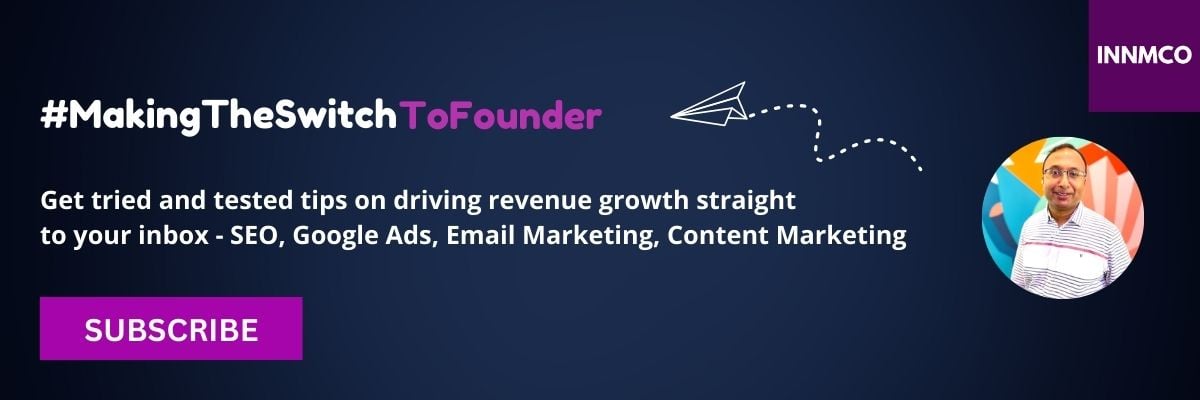How to use HubSpot CRM?
I discuss HubSpot CRM features that I use to communicate with buyers, organise leads, manage opportunities and customers.
1. The first HubSpot feature I used
My key business goal was to hit the revenue targets that I had set for my business. A key marketing goal was to increase brand awareness and increase the number of leads by x% within a specific time period using certain channels.
Promoting my business online was key to executing our content marketing strategy, creating brand awareness and generating leads.
I was trying to balance ‘how do I maximise our business results?’ vs ‘which HubSpot capability do I start using first?’ I was exploring, how I would spent my first few weeks using HubSpot. I had the following options:
-
Recreate my existing website using HubSpot CMS.
-
Start using the blogs capability in HubSpot CMS.
-
Start using HubSpot CRM.
-
Start using email marketing templates in HubSpot Marketing
2. HubSpot CRM capabilities I started using
I decided to start with ‘#3 - Start using HubSpot CRM’. In my interactions with the HubSpot team, I came across features like the meeting scheduler.
The meeting scheduler is a seamless way for external organisations to setup and schedule meetings with a service provider. This would enable my potential buyers to schedule and organise meetings with myself.
Meeting Scheduling
I setup the meeting scheduler feature in HubSpot. I integrated the meeting scheduler with my outlook calendar. An external organisation looking to book an appointment with myself would immediately get to see my availability. The HubSpot meeting scheduler can be integrated with Zoom for virtual meetings.
When an external organisation is scheduling a meeting with myself, the meeting scheduler will sent an automated meeting invite along with a zoom link. This will save time, as I don’t have to do the back and forth with my potential buyers on things like preferred meeting date, time, calendar invites and zoom meeting links.
Emailing contacts from HubSpot
Around that time, I was having conversations with potential customers. I started emailing my potential buyers from within HubSpot. This enabled me to track my conversations with potential customers (contacts in HubSpot CRM).
When you are sending an email to potential buyers from within HubSpot, you can set up email templates and email signatures in HubSpot. This gave me a head start as I was drafting emails to my potential buyers.
Contacts
I started adding contacts to my HubSpot CRM. This enabled me to organise my existing conversations with potential customers. The HubSpot CRM also enabled me to segment my leads as I started generating leads from multiple sources including direct (website built using HubSpot CMS), organic search, paid search etc.
Companies
I was also pleasantly surprised to see that HubSpot CRM would pick up the company details and logo from an external data source as I was adding companies to HubSpot CRM. This saves a bit of time, as I don’t have to manually enter this information to every company record that I created in HubSpot CRM.
Deals
I also set up deals and deal stages. This helped me to track potential opportunities in my pipeline. I could also view the progress of my opportunities towards completion. Deals are associated with contacts and companies.
Single Source of Truth
I wanted the CRM to be my single source of truth for all things related to customers and prospective customers. My lead generation mechanisms (example landing pages) were connected to my CRM. As I have an integrated sales and marketing technology stack, I didn’t have to log into multiple technology systems to check the progress of my leads and opportunities.
3. Eight ways to promote your business online
Now that you have a fully functioning CRM (Customer Relationship Management) system for managing leads. How do you go about promoting your business online?
As an entrepreneur, I wanted to build trust with my buyer by addressing their needs at different stages in the buyer’s journey. I also wanted to raise brand awareness and generate quality leads. In this blog, I share eight areas to focus while promoting your business online.
Start by creating a digital marketing strategy for your business. Consider popular digital channels like website, search, social media and emails. Organise leads in a CRM. Choose an integrated sales and martech stack to minimise the challenges associated with managing multiple systems. Find out more.
Conclusion
To conclude, a CRM (Customer Relationship Management) system helps you to manage your contacts, companies and deals. You can organise your CRM to act as a single source of truth for leads.
The HubSpot CRM comes with many additional capabilities (like most other CRMs) including meeting scheduler and emailing contacts from within the CRM. These capabilities help increase your team productivity.
Now that you have a fully functioning CRM (Customer Relationship Management) system for managing leads. Its time to start thinking about ways to promote your business online.
NOTE:
After signing up for HubSpot, I joined the HubSpot Solutions Provider program to enable my clients to grow their business using HubSpot. My views are based on my experiences using HubSpot. My views may be biased.
Please thoroughly evaluate your options with regard to marketing/ sales/ website tools and how they meet your specific needs before purchasing any tools.
Grow web traffic, leads & sales!
Written by Anees Misbahudeen
Founder & Digital Marketing Director, INNMCO
.png?width=200&height=125&name=Anees%20Misbahudeen%20-%20Company%20Profile%20(700%20%C3%97%20436%20px).png)
I help businesses grow web traffic, leads & sales. I am a digital marketing director specialising in SEO, Google Ads, email marketing & content marketing campaigns. I've supported the growth story of 30+ brands in software, financial services, automotive, manufacturing & B2B. I’ve 10+ years of digital marketing industry experience, as a founder, digital marketing strategist & consultant.
Subscribe to my monthly newsletter #MakingTheSwitchToFounder
Share
.png?width=75&height=75&name=INNMCO%20Company%20Logo%20-%202025%20(700%20x%20700%20px).png)

.png)



